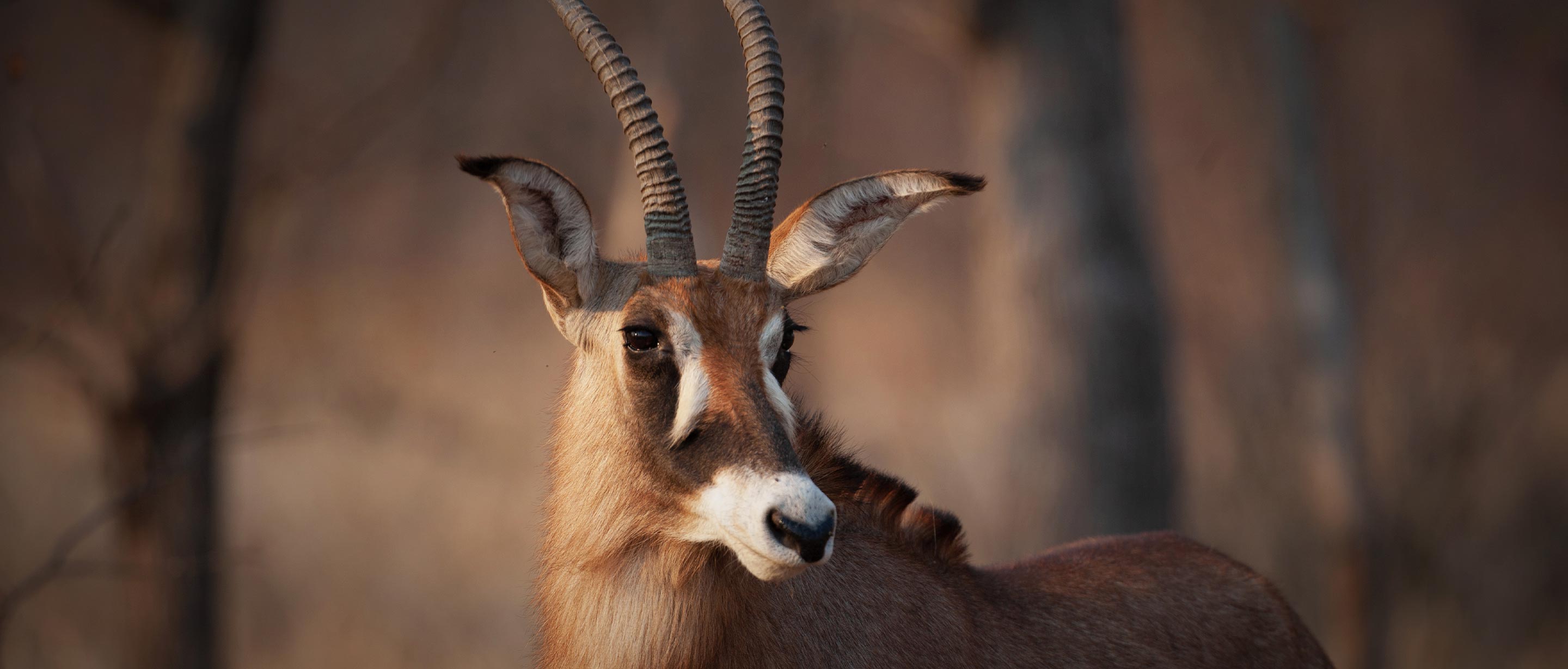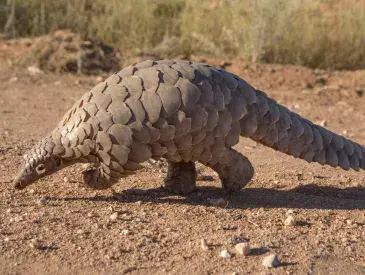What is a roan antelope?
The roan antelope is one of Africa’s largest bovids, only exceeded in size by the African buffalo and eland. It has a grey or brown coat, a black-and-white clown-like facemask — that is darker in males than females — and long, tasseled ears. Both sexes have backward-curving horns, although they are shorter in the females.
Hippotragus equinus
225 to 300 kilograms (495 to 660 pounds)
1 to 2 meters at the shoulder (4.5 to 5 feet)
17 years
Savannas, woodlands, and grasslands
Herbivorous
Approximately 9 months
Hyenas, leopards, wild dogs, humans
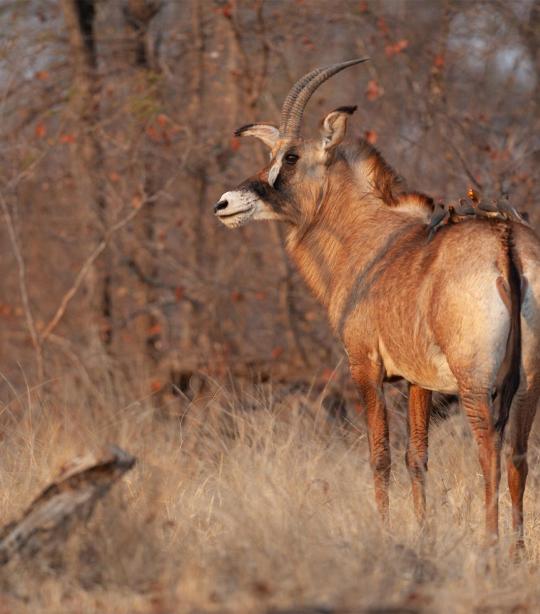
Challenges
The roan antelope is losing its living spaces.
They have been eliminated from parts of its former range due to habitat loss resulting from human activity, such as agricultural expansion and new road and settlement construction.
Poaching is also taking its toll on the roan antelope.
Hunting outside of protected areas is persistent, which is the reason they have been eliminated from most of their former range. Now, they mainly survive only in protected areas.
Solutions
Our solutions to preserving the roan antelope:
African Wildlife Foundation works with governments and communities to set aside land for wildlife corridors — large areas of land that wildlife can use to travel between parks and countries. Corridors give creatures, like the roan antelope, the ability to roam freely and safely as they move in search of water, travel to calving grounds, and look for food.
AWF works with communities to identify opportunities for sustainable livelihood improvement. In Siavonga, Zambia, where local populations earn large populations of goats, we focused on livestock production. Due to food security challenges, local communities were turning to unsustainable land-use activities, including charcoal burning, quarry stone crushing, and slash-and-burn agriculture. To alleviate food security problems and increase revenue while reducing wildlife habitat loss, AWF piloted a commercial goat enterprise that included finding markets where goats could be sold at competitive prices and training farmers in goat husbandry and financial management.
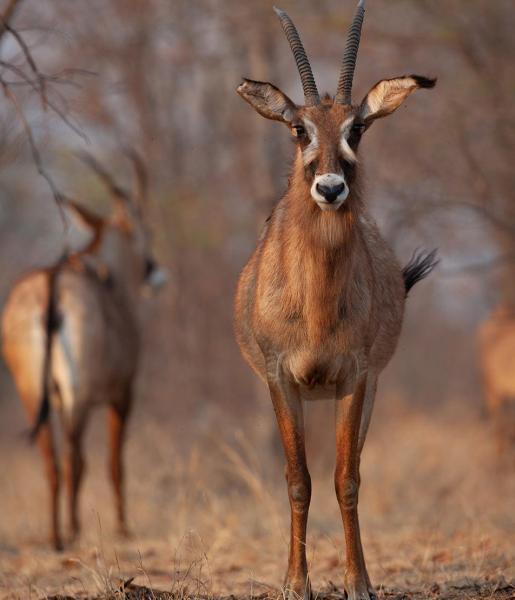
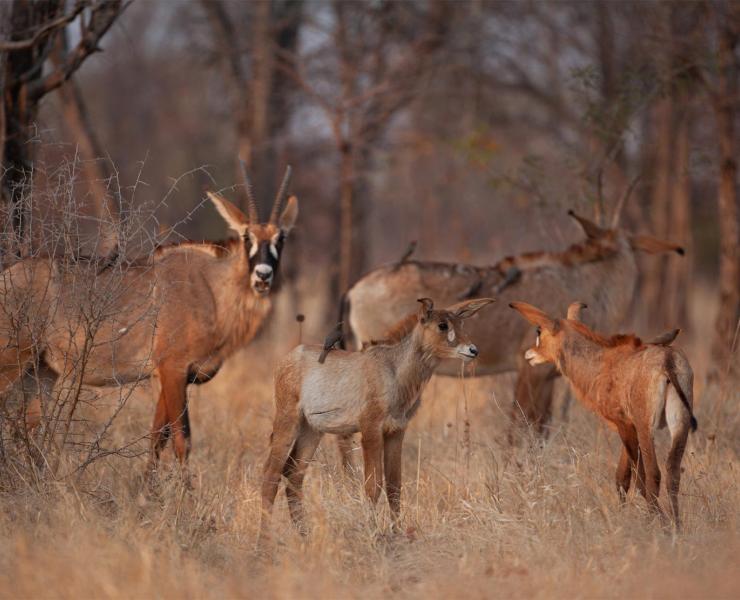
Behaviors
Roan antelope can have violent tempers.
While they do not have fixed territories, dominant males will exclude others from a 500-mile radius around its herd, consisting of anywhere from six to 20 females and young. When two adult males encounter each other, it is common for them to fight for dominance of their herd. They brandish their horns, run forward, and drop to their knees while clashing their large horns together.
They play hide-and-seek with their young.
Roan antelopes breed year-round, but births are more common during the rainy season. When the calf is born, its mother conceals it in tall grass and does not wander too far from it.
Diet
They do not like variety.
Roan antelopes prefer to graze on grass but will occasionally also feed on shrubs, herbs, and Acacia tree pods. They must drink regularly and inhabit areas where water is easily accessible.
Habitats
Where do roan antelope live?
Roan antelopes can be found in savannas — primarily in West and Central Africa. They prefer open or lightly wooded grassland, with medium to tall grass, and water access.
